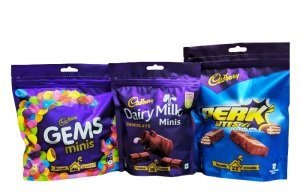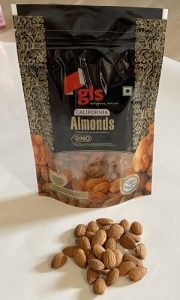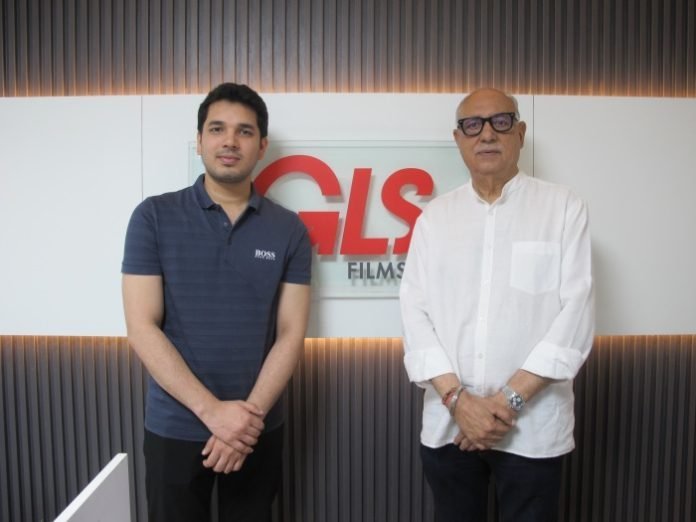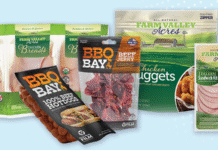GLS Films, headquartered in Gurugram and with several large plants south of the city along the highway to Jaipur, was established in 2003 by Rajesh Goyal and Sandeep Goyal. In the last four years, the next generation of the promoter family led by Arpit Goyal along with several senior industry professionals, has essentially transformed the flexible packaging division of the group into a structured and professionally managed packaging conglomerate.
We recently met with the GLS Group’s managing director Arpit Goyal and the president of its films division Arun Anand in Gurugram. As Goyal related to us, since his return from the UK where he did his postgraduate education in business management, he has been engaged in the expansion and modernization of the flexible packaging business.
This has entailed work in four areas – the first being backward integration with the in-house manufacturing of films and aluminum foil. The second area has been the structural transformation of the company to one that is professionally managed on a day-to-day basis to handle both the new capacity additions in flexible packaging and its accompanying projects. This has enabled the third area of expansion – establishing a global presence as a packaging materials exporter. The fourth project has been the diversification into aseptic packaging by setting up a 50:50 joint venture with the Norwegian Elopak.

As one can imagine, the past four years have seen an intense capital-intensive construction of new state-of-the-art plants, technology selection, and the installation and commissioning of new manufacturing lines. These have been brought into production while building and expanding the customer base for the company’s wider packaging offerings to various FMCG companies which now form the diversified and global customer portfolio of the Group.
Film manufacturing
The backward integration in film manufacturing has meant the induction of a 10.6-meter-wide ABC polyester line from Dornier in a new plant on a 60-acre site along with two state-of-the-art high barrier Bobst Metallizers equipped with Alubond technology giving the company cutting edge technology in barrier film production.
On the flexible packaging side of the business, a W&H Varex II 3-layer 3.2 meter wide PE blown film line has also been added. The blown film contains an annealing unit that helps to flatten the film output thereby improving its capacity for high-barrier metallizing supported by the Bobst metallizers.
While GLS sells some of the production of its biaxial polyester line, the production from its blown film is reserved for producing in-house flexible packaging materials.

The new blown film line has enabled GLS Films to come up with new structures such as polyester on the outside laminated using an adhesive to a high barrier metalized polyethylene layer. This structure delivers excellent barrier, sealing, and machinability properties for the small sachet market for liquid products, according to Arun Anand, “With liquids like shampoos, syrup, and hand wash being very difficult to pack, we have the possibility of dominating the industry with this structure and our packaging facility.” Anand points to the development of new and more sustainable structures by the company for products such as Nestle’s Maggi noodles.
New CI Flexo and gravure presses
Meanwhile, the addition of a Bobst CI flexo 8-color press and two Bobst rotogravure presses in the last two years, has added to the earlier complement of six gravure presses that were installed in past years. The new CI flexo press has opened up a new product portfolio for the company in terms of using thinner PE films for personal hygiene products. The company also manufactures inks at its own plant and rotogravure cylinders in its flexible packaging plant.
In the converting section, the company has numerous laminators, including Bobst and Nordmeccanica, slitters, rewinders, and a formidable battery of pouching machines. Its battery of 18 pouching machines can deliver all formats and combinations, including stand-up pouches with a variety of gussets, panels, and closures such as side gussets, center-seal, and five-panel pouches.
Exports

This modernization has allowed the company to supply high shelf-impact packaging materials to brands such as PepsiCo, Kellogg, Nestle, Mondelez, HUL, ITC, Amul, General Mills, and Walmart, and also to export high-value flexible packaging that meets the evolving sustainability compliances that these require. Export customers in the US, Canada, and Europe include Walmart, Kraft Foods, and Aldi.
Apart from the diversification into biaxial polyester films and its metallization plant, GLS has also invested in two aluminum foil manufacturing lines in a new 36-acre plant. These provide rolled aluminum foil inputs as thin as 6.3 microns for the company’s in-house use as well as sales to other companies.
GLS-Elopak
Perhaps the most significant diversification of the GLS Group is the joint venture with Elopak in 2022. This has led to the building and commissioning of a greenfield liquid packaging plant on a 30-acre site in Haryana’s Rewari. The GLS-Elopak plant is a ‘green’ building with the plant providing aseptic packaging to both fresh and aseptic segments such as dairy, juices, water, and liquor cartons for both domestic and export markets.
As Anand and Goyal relate to us, the past four years, and especially the last two of these, have entailed multiple activities in parallel at several new sites along the same road. Sustainability measures such as zero liquid discharge and the use of greener fuels and solar energy have also been undertaken. There is a sensitivity to standards and to regulatory compliances.
It seems that the four efforts or projects that Goyal took on have been transformative – already reaching a level of production and fruition. Another modern packaging conglomerate is taking shape in North India. And as can be expected, there is a further expansion plan that is also in consideration. Watch this space!












